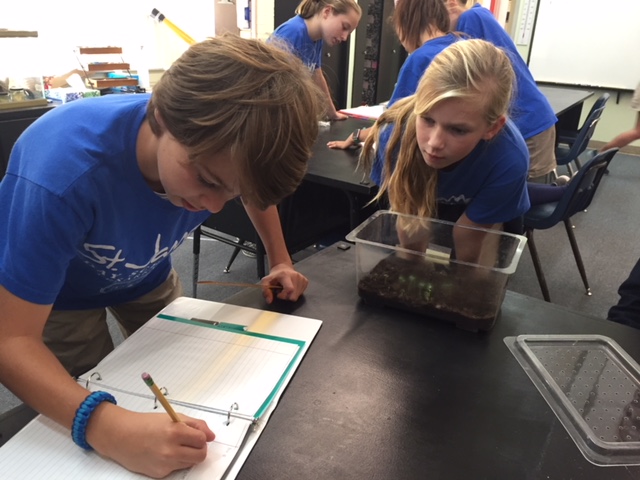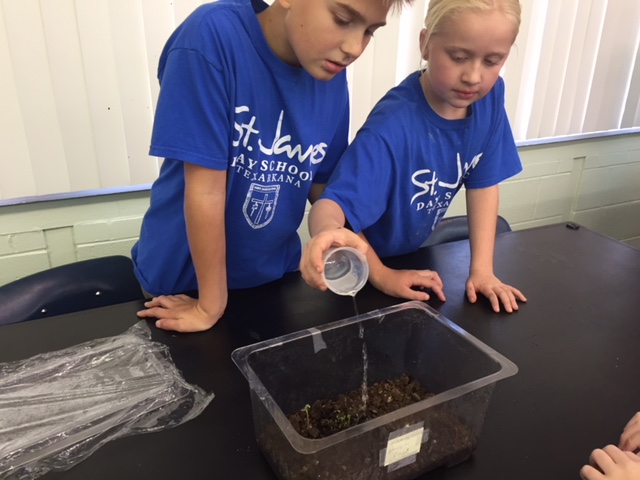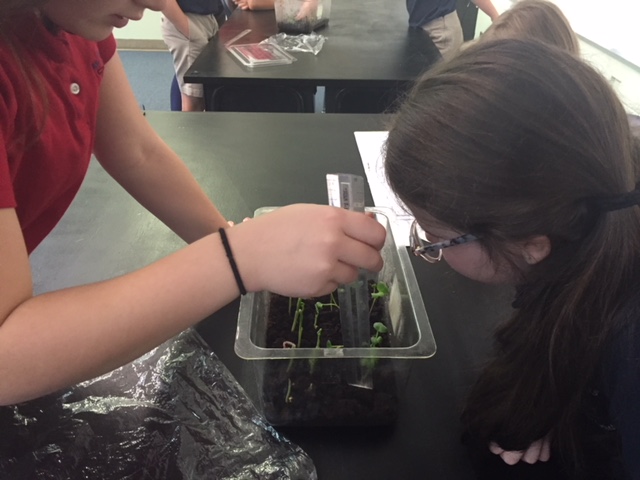Environmental Investigations
Fifth grade has begun a new FOSS Science unit, Environments, in which we study organisms in their environments, including adaptation in their environments. Last week, we planted 5 types of seeds--corn, pea, barley, radish, and clover-- in small rectangular terrariums for our first investigation. Students also created a terrarium map to identify their seeds properly. After discussing the environmental factors of temperature, sunlight, and water, lab groups determined an amount of water for their seeds and a location with adequate light inside a hallway with a well-regulated temperatures. Three days after planting, we were excited to discover sprouts! The lab groups then recorded their data of which seeds had grown, and how much. Every other day, we are checking on our terrariums, only to find new growth. This has brought an element of surprise into our afternoons-- how much have our plants grown, and have any not grown? Students are using their math measuring skills as they learn how much the plants have grown. The only variable that students have changed is the amount of water. At the end of this investigation, students will compare their results and graph them to see whether the amount of water affected growth. We will then add isopods and beetles to our terrariums and investigate how these animal organisms fare among the plants. An added bonus-- we will use these plants as "crops" for our Colonial Living History Project in December.




